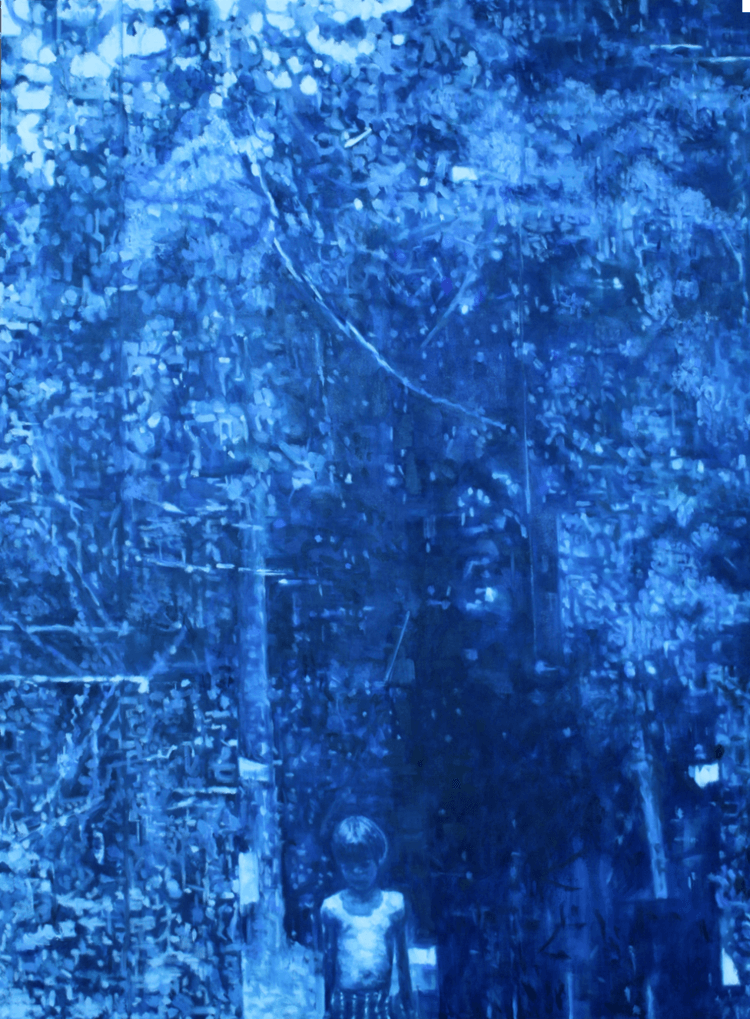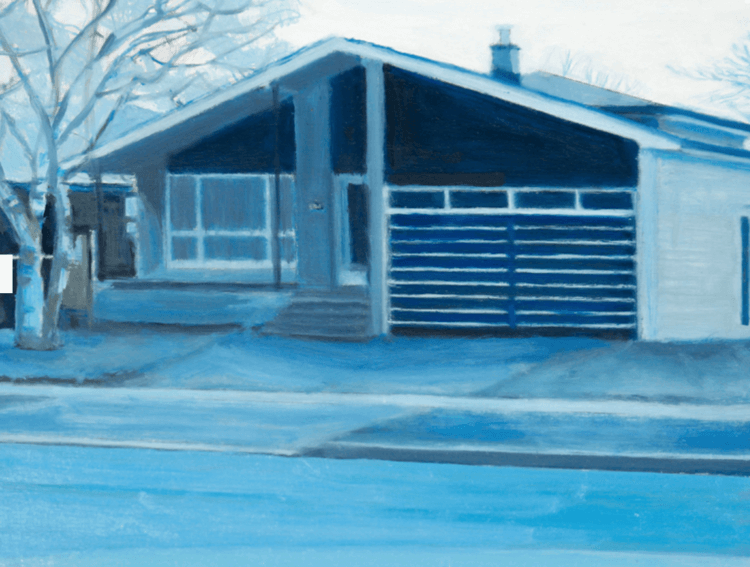David Abecassis: Finding Common Threads
15 Central Park West, oil on linen, 9 x 7 in., 2017
David Abecassis
Blue Boy, oil on canvas, 48 x 36 in., 2020
Camp, oil on wood panel, 11 x 9 in., 2014
Candles and Peonie, oil on wood panel, 5 x 7 in., 2012
Yellow Candle Flowers, oil on wood panel, 16 x 20 in., 2019
Blue Flowers, oil on canvas, 30 x 40 in., 2017
Suburban House 7, oil on canvas, 8 x 10 in., 2018
Suburban House 2, oil on canvas, 8 x 10 in., 2014
Lounge, oil on canvas, 20 x 18 in., 2016
Painter David Abecassis is fascinated by the notion that people of different backgrounds and lived experiences are connected through memory. David often works from photographic images to explore this concept in his work. In speaking about this recurring theme, David said, “When one can relate to another’s memory or thought by looking at an image, it creates a sense of identification. “
Tell me about your background and where your creative journey began.
We always drew as children. I remember my grade 3 art teacher praising me for my drawings. I liked it. My brother is a painter and he influenced me a lot. When I was in grade 9 I thought I would study architecture. But towards the end of high school a few of my friends went to art school. It seemed so fascinating and I had to study art. So I studied sculpture/ installation and art history in undergrad, studied for a year in Florence Italy, then did my MFA. I’ve been painting ever since.
Where do you find inspiration for your work?
I am always thinking about it. Subjects come from direct observation from life, my photography and my family. But what has informed the work is art history and being critical of the world around me. That’s just how I think conceptually. Most importantly, it is trying to do something good to help the world.
What role does memory play in your work?
Memory is large for me. I am always remembering and thinking about past experiences. But I want to remember in order to inform the present and future in realizing work. I think of the collective memory I’ve inherited from family and my earliest teachers. I have a painting series called Blue Memory whereby looking at the imagery in the paintings, I want the audience to connect our memories together in order to bring us closer. We may be different in our lived experience, but we are somehow, the same.
How have your paintings shifted and evolved over time?
They are always changing. I really have to consciously reel in my thoughts so the production of the work remains as consistent as I possibly can keep it. I was taught not to worry about developing a style, but rather make work which is engaging and critical. But I realize consistency is important.
What does a typical day in the studio look like for you, and how has your art practice grown or changed?
I like to work during the day when the light is good in the studio. So I would start at 8 ish, take the dog for a walk and get into it. I take care of my son’s needs, breaks for food, dog walks. Then towards the late afternoon I will do most of my emailing, and image preparation etc. And I usually work on a few paintings at a time. So typically I will work on one in the morning and then one in the afternoon on studio days.
Which experiences have impacted your work as an artist?
I’m sure my lived experience is always there if I am conscious of it or not. Experience of family is there as well in terms of my parents, aunts and uncles and my earliest teachers being the immigrant generation. They survived hard times and left countries as persecuted people and worse, to come to America. But reading and looking at other art and going to shows has always informed the work.
How has Instagram impacted your art career?
Instagram is great. I love posting and sharing on the platform.
What are your future goals and aspirations?
I will always keep making and selling paintings and etchings. I would like to have gallery representation. I have always been drawn to work that has a social purpose. This approach comes from some of the amazing artist/ teachers I have had the privilege to learn from during my student days in art school, whose conceptual focus on ideas was so important.
Follow David on Instagram: @david.abecassis
Website: www.davidabecassis.com









